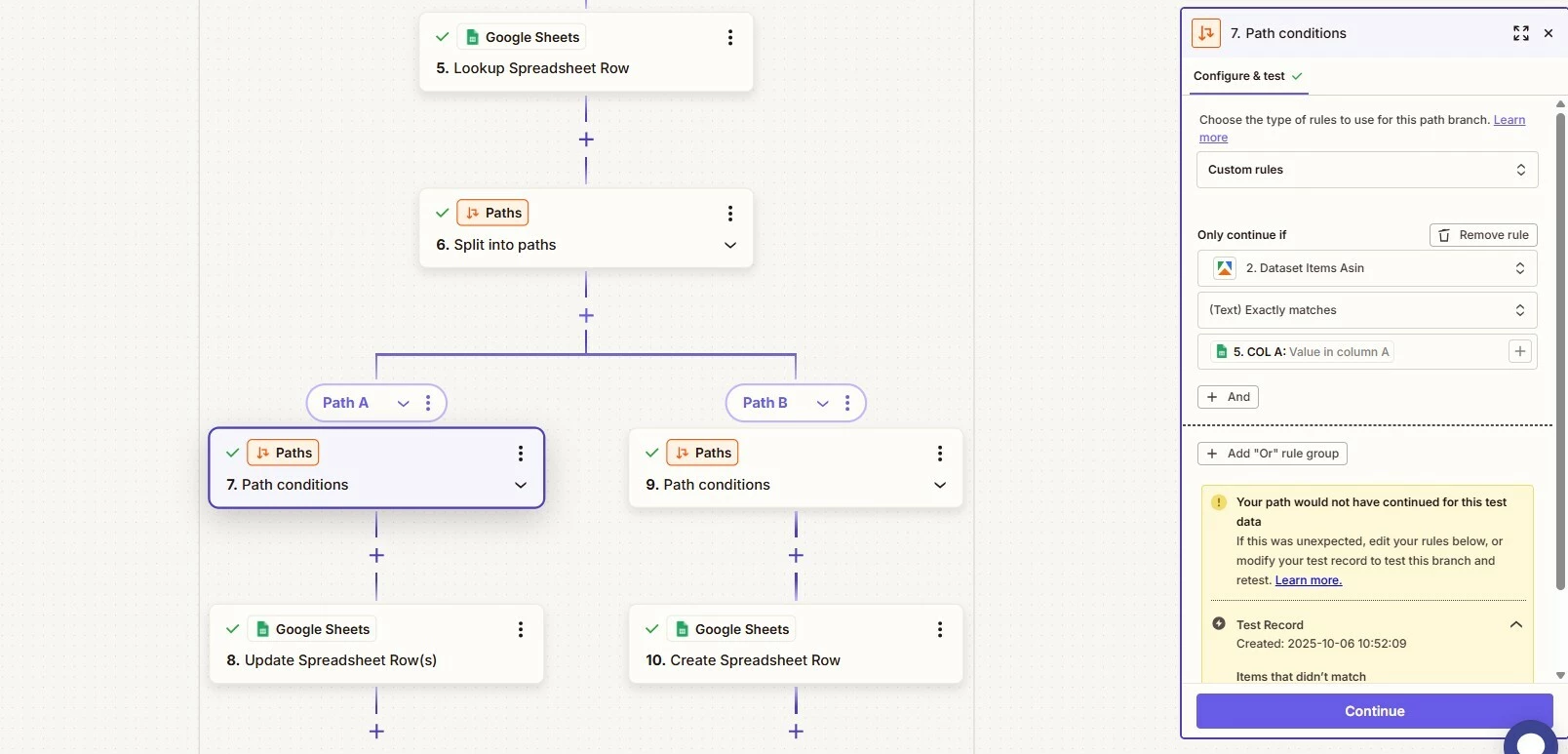Hello everyone,
I’m currently trying to create a Zap that will automate future competitor analyses.
Here’s how the process should work:
-
Zapier triggers a run on Apify (junglee/free-amazon-product-scraper).
-
The data generated by Apify (JSON) should then automatically be transferred into a prepared Google Sheets table.
However, I’m running into several issues:
🧩 Problem 1: OOM Error during Apify Run
When I start the actor via Zapier, I regularly get the following error message:
“The Actor hit an OOM (out of memory) condition.”
If I run the same actor directly in Apify, everything works perfectly.
-
Has anyone experienced why Apify tends to hit a memory limit more often when triggered via Zapier?
-
Is there any way to increase the memory allocation or bypass the timeout within the Zapier context?
-
📊 Problem 2: Preparing the JSON File for Google Sheets
I want to format Apify’s JSON output so that it automatically fits into my existing Google Sheets structure.
At the moment, I’m using:
-
Fetch Dataset Items (Apify)
-
Create Loop From Line Items (Zapier)
-
then Lookup Spreadsheet Row (Google Sheets)
Questions:
-
Is this combination generally sufficient to cleanly transfer data into Google Sheets?
-
Or do I need an additional step / other steps to transform the JSON structure?
🔁 Problem 3: Setting up “Create Loop From Line Items” correctly
I’m not sure how to configure the “Create Loop From Line Items” step properly.
-
Which fields should I reference here (e.g. from the Apify dataset)?
-
Do I need to specify a separate field for each object in the JSON, or can I pass the entire list?
An example (or screenshot) of a correctly configured step would be extremely helpful.
🎯 Goal
In the end, the Zap should automatically:
-
start the Apify actor,
-
fetch the results,
-
and write the data line by line into my Google Sheet.
I’d really appreciate any tips, best practices, or example Zaps from anyone who has implemented something similar.
Thanks in advance 🙏
Here a screenshot of the created zap:








